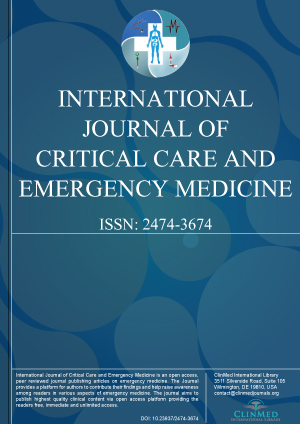Archive
Open Access DOI:10.23937/2474-3674/1510009
Gonzalo Hernandez, Concepcion Vaquero Collado, Susana Garcia Plaza, Ana Villasclaras Pacheco, Candido Pardo Rey, Eugenia de la Fuente O'Connor, Rafael Cuena, Paloma Gonzalez Arenas, Rafael Fernandez
Article Type: Original Research Article | First Published: December 31, 2015
Article Formats
- Full Article
Open Access DOI:10.23937/2474-3674/1510008
Distasi Maria Antonietta, Del Gaudio Tito, Malcangi Annarita and Pirronti Angela
Article Type: Research Article | First Published: December 30, 2015
Article Formats
- Full Article
Open Access DOI:10.23937/2474-3674/1510007
Glycemic Disturbances on Admission as a Predictor of Inpatient Mortality
Daniel Saenz-Abad, Jose Antonio Gimeno-Orna, Maria del Carmen Lahoza-Perez, Elena Rivero-Sanz, Marta Jordan-Domingo, Artur Juan-Arribas, Maria del Mar Becerra-Mayor and Cristina Baquer-Sahun
Article Type: Original Research | First Published: October 30, 2015
Article Formats
- Full Article
Open Access DOI:10.23937/2474-3674/1510006
Ventricular Arrhythmias in Acute Coronary Syndrome Patients: Therapy of Electrical Storm
Tobias Willich and Andreas Goette
Article Type: Review Article | First Published: October 01, 2015
Article Formats
- Full Article

Volume 1
Issue 2
Issue 2
